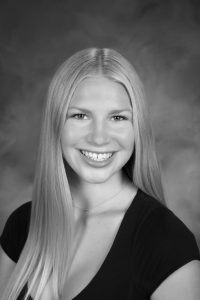U Students Continue to Feel Underrepresented Despite U Efforts to Increase Faculty Diversity
(Design by Claire Peterson | The Daily Utah Chronicle)
April 22, 2023
Throughout the past few years, the University of Utah has been making progress in increasing the number of historically excluded and underrepresented faculty at the U, reporting a 23% increase in faculty of color on campus.
To increase faculty diversity, the U has been implementing different methods of recruiting, focusing more on connection and outreach to find potential staff members, said Myra Washington, the assistant vice president for faculty equity and diversity at the U.
“The first strategy, which has really been a proactive strategy, is to actively expand networks and to reach out directly to folks who they would like to see apply,” Washington said. “What has been shared with me is that for most folks who have decided to apply and then who are ultimately offered jobs here [have said] that personal outreach has been really integral.”
Since putting these operations in place, the U has seen a 25% growth in Black faculty, according to Washington, which is huge for the university.
Boosting the amount of historically excluded and represented groups means focusing on all different groups who have been ostracized in the past, Washington said, which helps expand the number of perspectives on campus.
“Part of this is also recognizing that [increasing historically excluded faculty] might pertain to folks from geographic regions, or political ideologies, or religious identity,” Washington said. “Thinking much more expansively about this is great because it means that we are having those votes and their experiences and their unique take on their research on our teaching represented here at the institution.”
Despite these efforts to increase the diversity of faculty, many students still feel like they aren’t represented by their professors here on campus, said Nia Brooks, a sophomore majoring in honors biology and an Operation S.U.C.C.E.S.S. undergraduate fellow at the Black Cultural Center.
“I, at least personally, haven’t had any faculty or professors that identify as Black or African American,” Brooks said. “I’ve had, I think, one teacher of color, but again, like white-passing, so it’s kind of hard. I’ve been to more of the events hosted by the Black Cultural Center and through that, I see a little bit more of the faculty.”
Only 11.6% of faculty at the U are non-white, according to College Factual. Additionally, the student population is around 35% non-white, according to Data USA.
Having professors who represent students helps create a community and a sense of understanding, Brooks said.
“I’ve had one Black teacher in my education,” Brooks said. “She was so fantastic. It’s just kind of like a community thing, not feeling entirely out of place and not super embarrassed if I don’t know something. I just think it would help in that regard.”
According to Brooks, faculty representation is especially important in fields that have been historically dominated by white people. Having this representation would help increase the student diversity in these majors as well, because “you can’t be it if you don’t see it,” she said.
Brooks said as a Black STEM major, it’s important to have more diverse faculty in the College of Science because it’s a “very white-dominated space.”
“I can count the number of Black people in my classes on one hand,” she said. “Sometimes it’s just me and one other person in a class of 500.”
In the future, Washington wants to continue focusing on outreach to historically excluded faculty and ensuring after they’re hired they receive the support they need.









